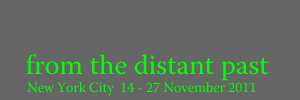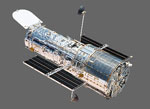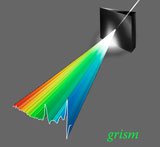

Hubble Space Telescope
 The facades are being illuminated with projections of observations from the Hubble Space Telescope (HST) one of the greatest and most important scientific instruments which has operated now for more than 20 years. Made with one of Hubble's prime instruments, the Advanced Camera for Surveys (AVS), these unique observations include some of the most distant objects in the Universe.
The facades are being illuminated with projections of observations from the Hubble Space Telescope (HST) one of the greatest and most important scientific instruments which has operated now for more than 20 years. Made with one of Hubble's prime instruments, the Advanced Camera for Surveys (AVS), these unique observations include some of the most distant objects in the Universe.
In addition to the exquisite images for which Hubble is so famous, the cameras can be fitted with prism-like devices, called "grims", that spread the light from distant galaxies and quasars as well as nearby stars into a band of colour called a spectrum. These spectra, some of which are being projected to the facade, can be analysed to yield a wealth of information about objects that are so far away and so faint that they will not reveal their secrets in any other way available to astronomers at present time. In many cases, these observations provide a measure of the distance to the object which tells us that we are looking into the very distant past. Some of these faint objects are being seen as they were when the Universe was less than 10% of its current age of 13.7 billion years.

The Space Telescope Euorpean Coordinating Facility (ST-ECF) in Munich, Germany, has recently released into the Hublle archive a set of more than 47.000 individual spectra. This is the largest collection of its kind ever created and will become a rich resource for astronomers. "From the Distant Past" shows a selection of around 1400 spectra.
Links
grism poster: poster explaining in English and Italian what Hubble's grism observations are and how they relate to the laser installation at the Palazzo Franchetti, Venice 2010.
ST-ECF ACS/WFC Grism: Final Release

